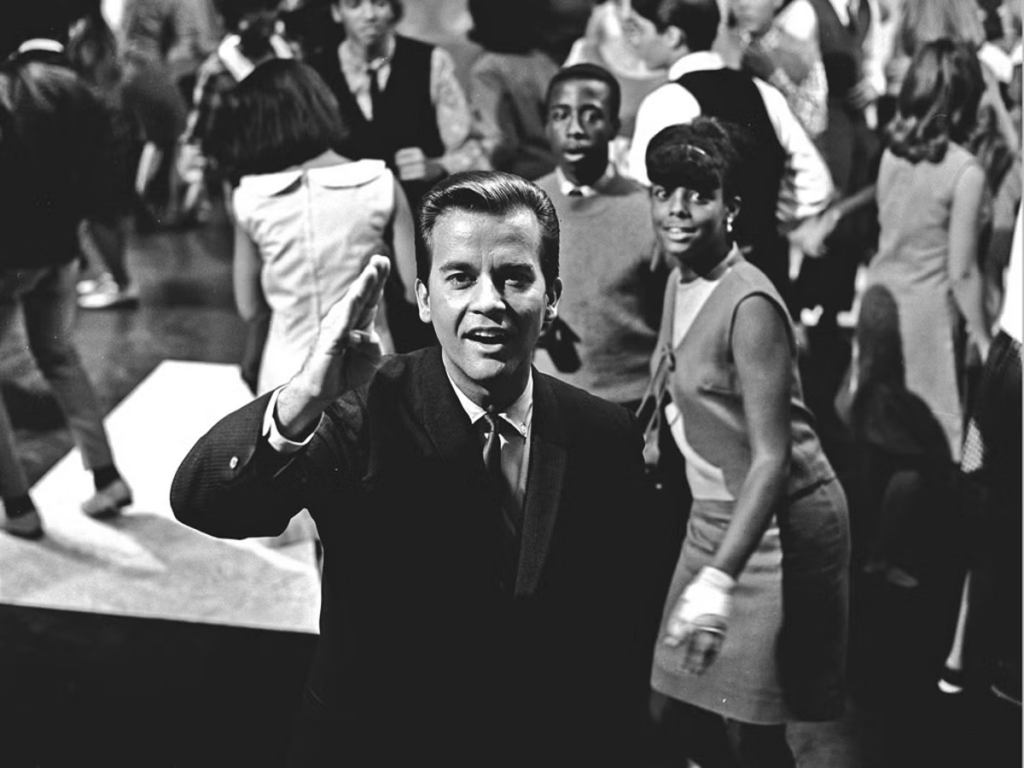
In an era when much of America was still racially segregated, one television show dared to play music by Black artists, invite them to perform, and—over time—welcome integrated audiences. That show was American Bandstand. While not always perfect in its efforts, Bandstand quietly but powerfully helped shift how millions of Americans saw and heard race in popular culture.
A Segregated Media Landscape
In the 1950s, American television was overwhelmingly white. Black artists were often excluded from mainstream programming, even as their music filled jukeboxes and dominated local radio. Teenagers of all backgrounds listened to the same songs, but on TV, those faces were largely absent.

American Bandstand, launched in Philadelphia in 1952 and taken national in 1957, initially reflected that bias. The early years rarely featured Black performers or dancers. But that began to change—slowly and significantly—under the leadership of Dick Clark.
Dick Clark’s Quiet Revolution
Dick Clark wasn’t a civil rights activist in the traditional sense, but he believed deeply in music’s power to unite people. He pushed for more inclusive bookings on the show and featured rising Black stars like Chuck Berry, Sam Cooke, The Supremes, and Smokey Robinson at a time when other shows wouldn’t.

These appearances weren’t just symbolic. They reached millions of households across racial and geographic lines. Suddenly, Black artists were no longer invisible. They were being celebrated, applauded, and embraced by a national audience.
Integration on the Dance Floor
For years, Bandstand was criticized for not allowing Black teenagers in the Philadelphia studio audience. But by the early 1960s, after moving production to Los Angeles, the show began to feature more racially diverse dancers.

Integrated dance floors on national TV were still rare—and controversial. But Bandstand showed America what was already true in youth culture: Black and white teens were dancing to the same music, wearing the same styles, and dreaming the same dreams. On screen, it was subtle. In real life, it was radical.
A Platform for Black Excellence
American Bandstand didn’t just show Black artists—it made them stars. A televised performance could launch a single into the charts and bring an unknown singer into living rooms across the nation.

For many viewers, Bandstand was the first time they saw a Black performer treated with respect and admiration on national television. These moments helped change hearts, shift perceptions, and slowly erode the barriers between races in American media.
More Than Music
The true power of American Bandstand wasn’t just in its hit songs or dance crazes—it was in its quiet, consistent challenge to the status quo. By giving Black artists and integrated dancers a place on screen, it helped change what was considered “normal” in American entertainment.
It may not have marched or protested, but Bandstand brought the spirit of integration into millions of homes. And in doing so, it played a part in reshaping American culture—one song, one dance, one broadcast at a time.